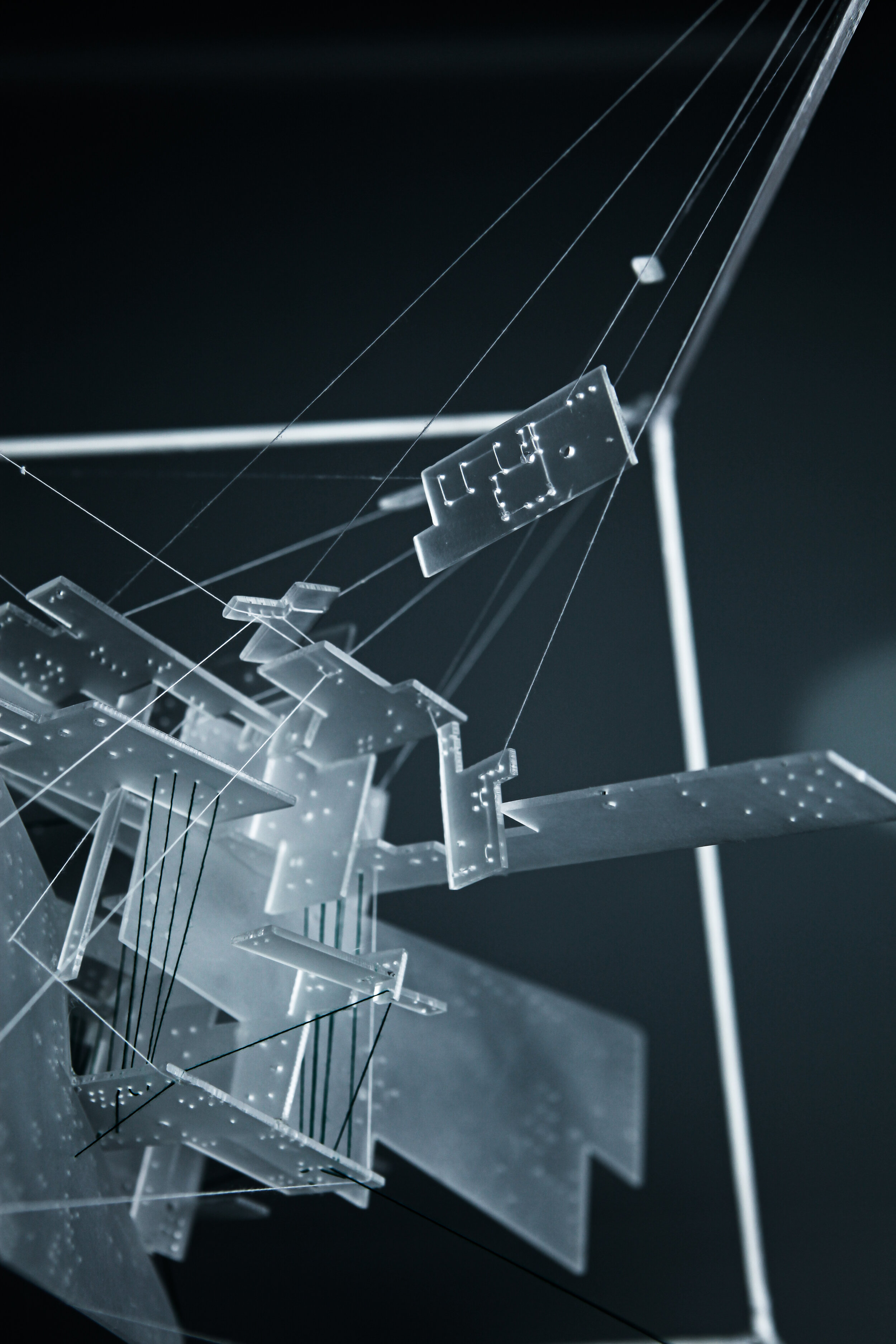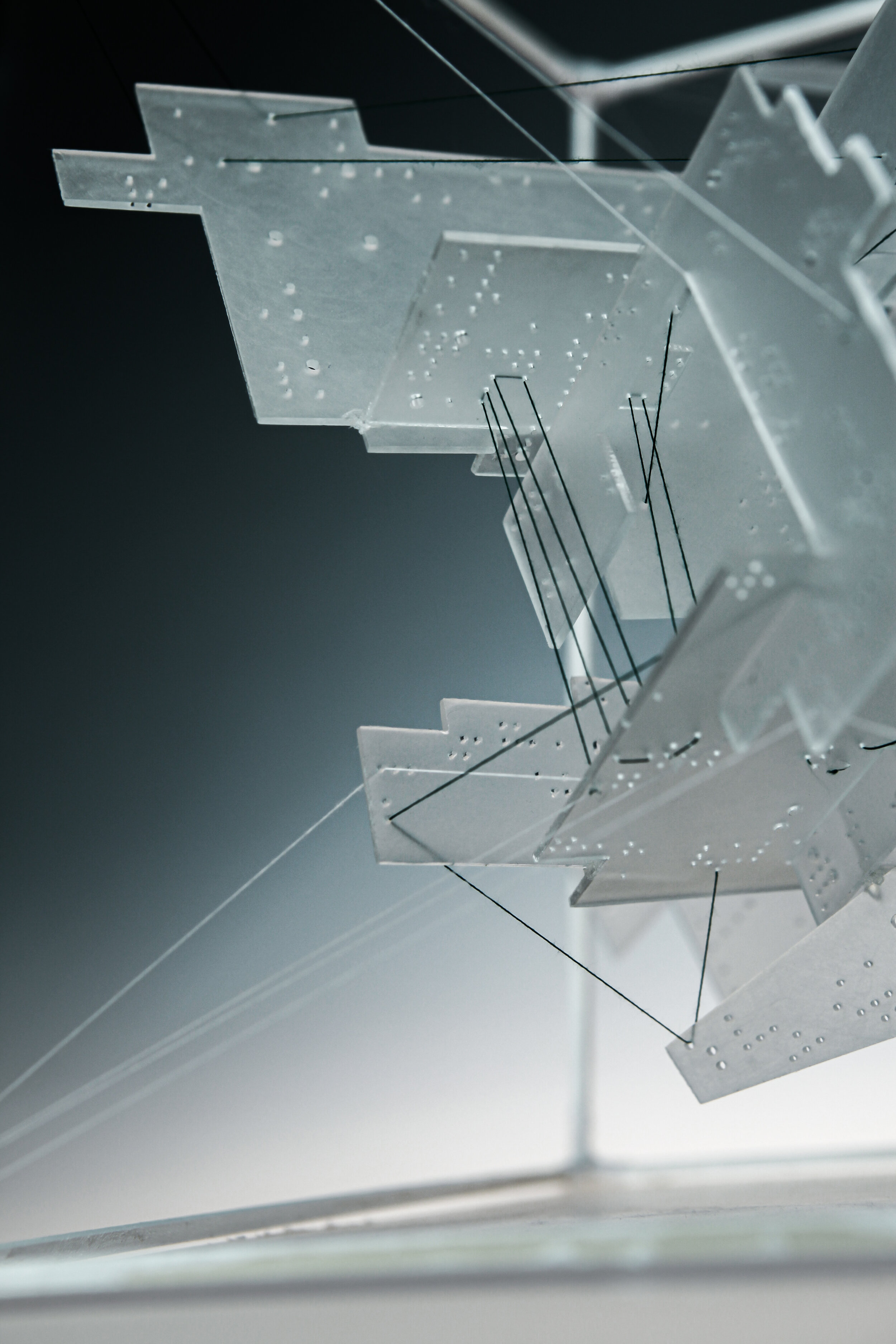Chuchu Qi
Art editor Jenny Wu interviews Chuchu Qi about the artist’s work and the architectural model published in Issue 1.
Tell me about yourself as an artist and architect. When did you become interested in this field, and how has that interest evolved?
I am still a beginner in both art and architecture, but I see myself as one who is adventurous, who always wants to try new materials and forms. My original interest in art, especially graphic design, might have come from my dad… Wherever we travel, or just hang around, he uses his phone to capture beauty and inspiration around us. I, as a matter of fact, see art as way to represent, to share, and to converse. And architecture offered an additional dimension in doing this, so I stepped into the field of architecture once I started college here at Wash U…
What inspired you to make this architectural model, and what were some of your materials and tools? What did your process look like?
So this started as my core studio assignment. Everyone got one architect’s renowned work and generated graphic as well as physical analyses from it. What I got was famous French female architect Eileen Grey’s E. 1027.
I started with the plan and elevation of E.1027, and what I found especially fascinating was the hierarchy of the walls that play the function of dividing public and private space in this house.
On Rhino, I connected both intended and unintended lines to make a composite of the grid in this architecture, given that dots at the cross of the lines varied in radius as the marker of different roles. What I did further was employ a laser cutter as the medium to cut these hundreds of pieces out. I hand-sanded each piece, then developed new rules between them physically: inspired by the idea of tension, I found that some of these pieces can be structurally connected without glue—so I worked more on this idea and developed this physical analysis structure that is supported by the inner force of the pieces and the outer force of the tension of a single line. Floating inside the cube frame, the model itself is beyond the frame of the “structure,” but a juxtaposition of intentional and unintentional making, and a combination of different materials that worked together as a result of the same thread of thought. It is a symbiotic structure whose inside and outside influence each other by different means and interpretations of tension, but also whose integrity works together as a whole, echoing the starting point of hierarchy that is redefined repeatedly by the new structure.
What do you hope that people viewing your work will come away thinking or feeling?
I hope people can feel the internal strength of this model, which is made possible by every piece in this structure, and which is synergistically tied together—if one piece loosens, others loosen. This is the conversation I want to have with my audience through this piece, if it could somehow remind them of things around them that are similarly synergetic and embodied…


